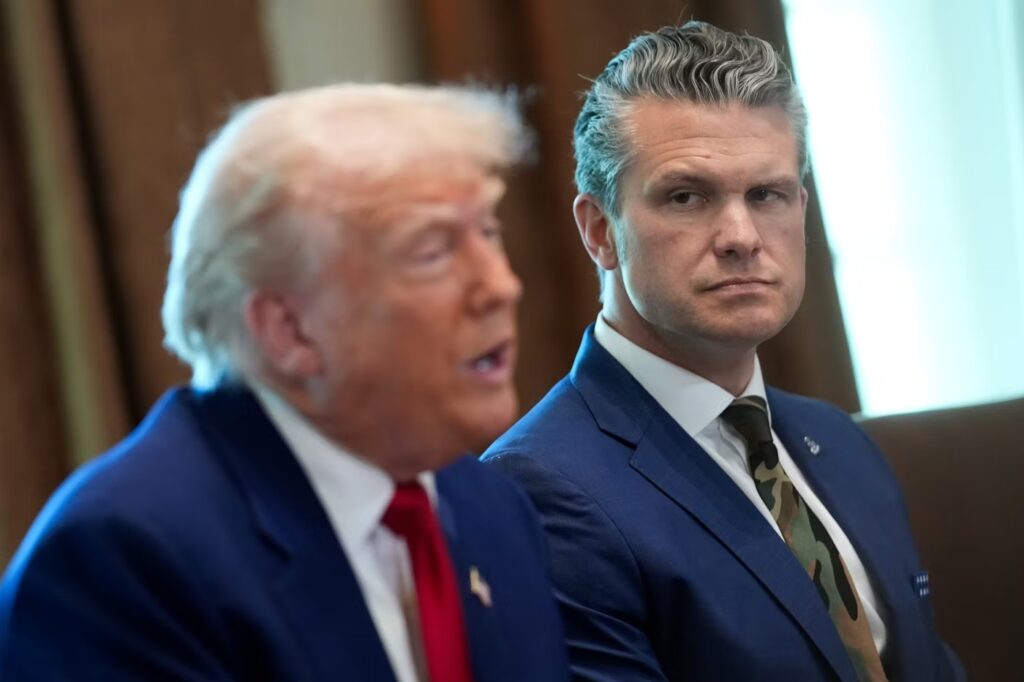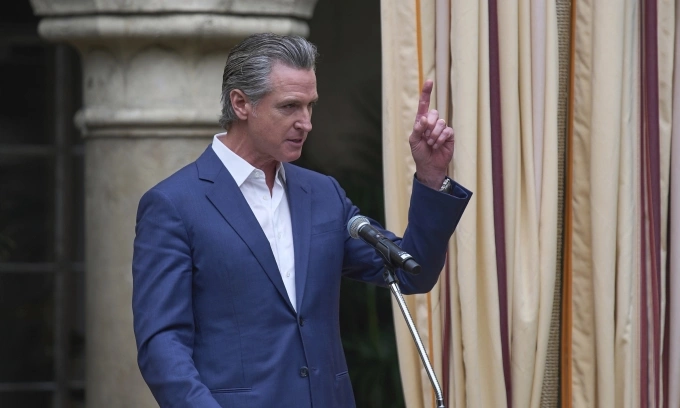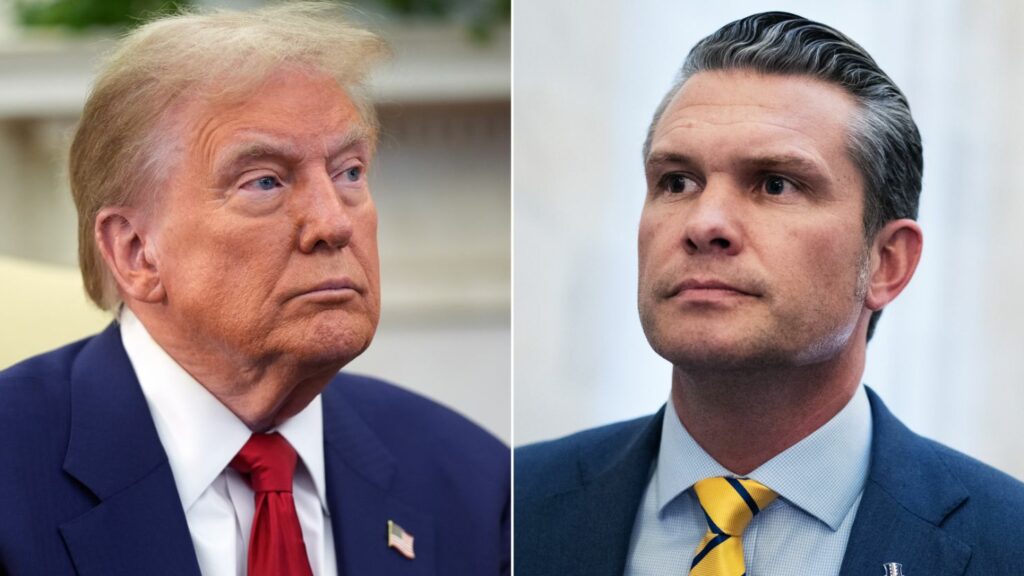A Reality Once Unimaginable: U.S. Troops Might Open Fire on Civilians

The events in Los Angeles over the weekend have forced us to confront a scenario that, until recently, seemed inconceivable in the United States.
Secretary of Defense Pete Hegseth looks on as Donald Trump speaks at the White House, seated beside him.

If you’ve forgotten what Donald Trump reportedly said to top military officials during the George Floyd protests in June 2020, now is a good time to remember.
Former Defense Secretary Mark Esper recounted in several interviews while promoting his 2022 memoir that, during a White House meeting discussing the protests, Trump turned to Joint Chiefs Chairman Mark Milley and asked, “Can’t you just shoot them? Just shoot them in the legs or something?”
Esper and Milley were reportedly appalled. Fast-forward to January of this year, during the confirmation hearing for the current Defense Secretary, Pete Hegseth. As it turns out, Hegseth was among the D.C. National Guard members deployed by Trump during the Lafayette Square protests.
Senator Mazie Hirono of Hawaii asked Hegseth how he would respond to a similar order if he were Secretary of Defense. According to The Washington Post:
“In June 2020, then-President Trump instructed former Defense Secretary Mark Esper to shoot protesters in the legs in downtown D.C.—an order Secretary Esper refused to carry out,” Hirono said. “Would you obey such an order from President Trump?”
Hegseth replied:
“Senator, I was in the Washington, D.C., National Guard unit at Lafayette Square during those events, carrying a riot shield in service to my country.”
As he recounted his experience, Hirono pressed the issue:
“Would you follow an order to shoot protesters in the legs, as President Trump allegedly directed?”
Hegseth answered:
“I saw 50 Secret Service agents injured by rioters trying to jump the fence, a church set ablaze, and a statue vandalized. It was chaos.”
To which Hirono concluded:
“It sounds like you’re saying you would carry out such an order.”
And The Post dryly noted: “Hegseth didn’t dispute her conclusion.”
In fact, at exactly 4:02 in the hearing video, he had the chance to say, “No, senator, I would never do that.” But he chose not to.
It’s the same Pete Hegseth who tweeted just this past weekend suggesting the possibility of deploying the Marines.
“Next time, I’m not waiting.”
Let’s also remember what Trump said at a 2023 campaign rally when referring to the Lafayette Square protests:
“You’re not supposed to get involved unless the governor or mayor asks you—but next time, I’m not waiting.”
When you add it all up, a chilling possibility comes into focus: Under a Trump presidency, American troops could be ordered to open fire on American citizens—and possibly others who aren’t.
The idea of the military using lethal force on civilians on U.S. soil once seemed unthinkable—more typical of authoritarian regimes. But today, with a president who has said, “I’m not waiting,” and a defense secretary who won’t reject the idea of shooting protesters, that nightmare scenario suddenly feels less far-fetched.
The Insurrection Act Looms

There’s growing concern that Trump allies—including Tom Homan, Stephen Miller, and JD Vance—are actively looking for a pretext to invoke the Insurrection Act. Over the weekend, Homan, now an immigration enforcement leader, declared:
“You’re going to see more work site enforcement than ever before. We’re going to flood the zone.”
That crackdown is likely to provoke more demonstrations—leading to confrontations, intentional or otherwise, that could provide the legal opening they seek.
Senator JD Vance called the L.A. events an “insurrection”—a word choice that may not have been accidental. Under Section 253 of the Insurrection Act (enacted in 1871 during the Ku Klux Klan era), the president may deploy military forces to suppress “insurrection, domestic violence, unlawful combination, or conspiracy” in any state where enforcement of federal law is being obstructed.
Presidents have used the Insurrection Act before—but always for narrow, time-limited purposes. The fear now is that a future President Trump might declare that a state isn’t enforcing laws to his satisfaction and call it an insurrection—justifying open-ended use of federal force.
From National Guard to Private Militias?
Legal scholar Joseph Nunn, writing in Democracy Journal last year, highlighted a disturbing legal loophole:
Because the law uses the term “militia” without defining it as the organized National Guard, a president could theoretically call private citizens into federal service—including groups like the Proud Boys, Oath Keepers, and other armed militias.
In fact, Oath Keepers leader Stewart Rhodes cited this interpretation in his defense during his trial. No surprise, then, that Nunn called the Insurrection Act “a nuclear bomb hidden in the U.S. legal code.”
This Is No Longer Just Theory

Donald Trump won the election. A slim majority supports his immigration policies—though approval dips when people learn how those policies are executed. Those who opposed his election must now accept the democratic outcome and work to reverse it in the next cycle.
But this issue goes beyond immigration. It concerns the use of state power against segments of the U.S. population—those whom the president finds undesirable. It’s about potential state-sanctioned violence.
We have a president who said, “Next time, I’m not waiting,” and a defense secretary who wouldn’t say, “No, I won’t shoot civilians.”
To many, this may have seemed like paranoid speculation a year ago. Not anymore.
All we have to do is listen—to what they said… or refused to say.